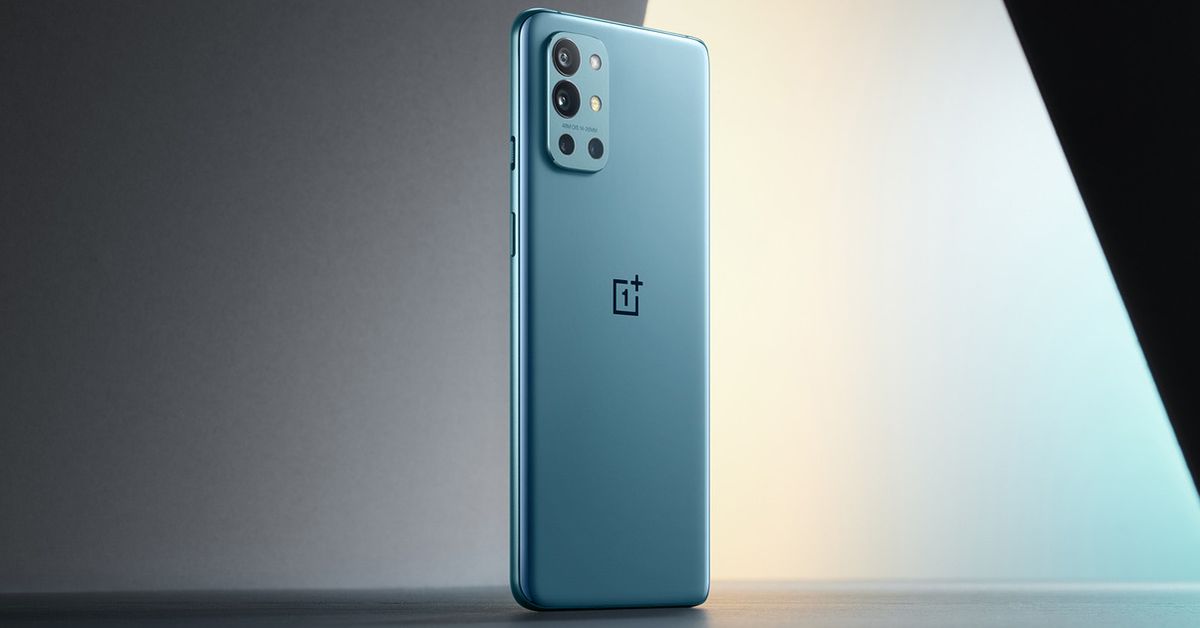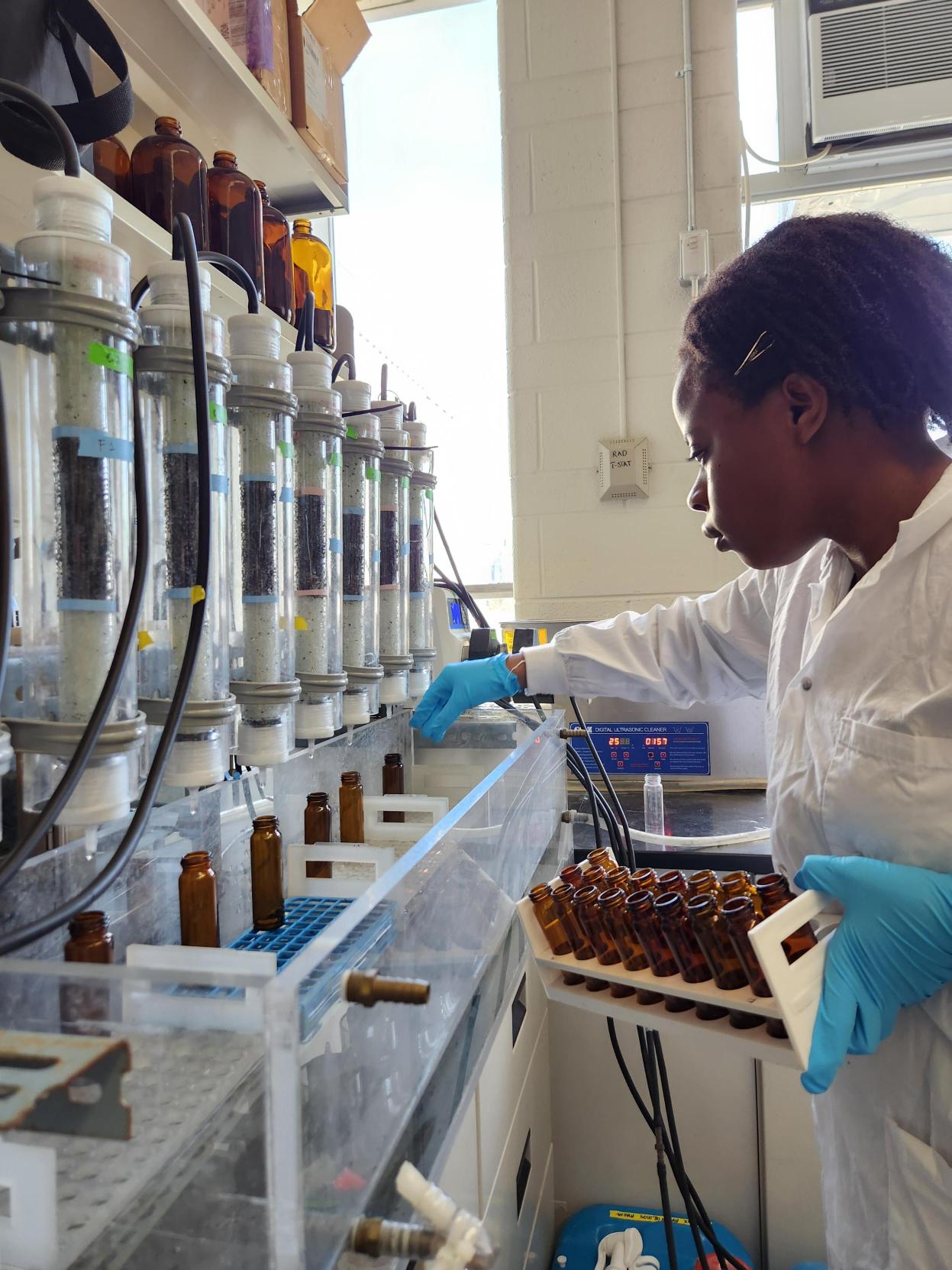Tech
OnePlus 9R offers fast-refresh rate screen, costs less – The Verge


Yesterday’s OnePlus event covered the high-end 9 and 9 Pro, but outside of that spotlight, the company has quietly revealed a smartly specced, less-expensive model: the OnePlus 9R. CEO Pete Lau confirmed last week that the 9R was on the way and would launch in India. It’s now listed on the company’s Indian website starting at ₹39,999, which is about $550. That’s an attractive price indeed, especially considering you’ll get one useful camera feature here that the $729 OnePlus 9 doesn’t have: optical image stabilization.
The 9R doesn’t include the Hasselblad-branded cameras on the 9 and 9 Pro, which isn’t actually a big loss. The 9 and 9 Pro offer newer hardware with features like bigger pixels and a higher-res ultrawide, so you do miss out on some nice upgrades, but the Hasselblad-developed color tuning is nothing special. You do, however, get a stabilized 48-megapixel main camera, which helps reduce blur from camera shake in lower lighting conditions. It’s unfortunately missing from the 9, though it is included on the $969 OnePlus 9 Pro.
Other cameras on the 9R include a 16-megapixel ultrawide, a 5-megapixel macro, and a 2-megapixel monochrome sensor. This system is borrowed from the OnePlus 8T, which is wholly capable of good image quality, even though its macro and monochrome cameras aren’t very useful.
There’s a 6.55-inch 1080p OLED with fast 120Hz refresh rate — same as the OnePlus 9 — and a Snapdragon 870 processor with either 8GB or 12GB of RAM. It’s not quite as powerful as the top-notch 888 processor on the 9 and 9 Pro, but it should be more than adequate to keep day-to-day tasks running quickly and smoothly. The 9R is equipped with a 4,500mAh battery with 65W fast wired charging, a handy OnePlus signature feature that delivers a full charge in just under 40 minutes. Wireless charging, however, isn’t offered. Oh, and there’s 5G support, of course.
All told, it looks like a series of smart trade-offs for almost $200 less than the flagship model. Right now, the phone is only confirmed to launch in India, but we’re hopeful that it will make its way to European and North American markets. While OnePlus brought its good $300 Nord N10 5G to the US earlier this year, the midrange Nord never made it stateside. The 9R looks like an excellent candidate to fill in a wide gap between the budget N10 and the basic flagship model.
In the meantime, customers in India can preorder the 8GB RAM / 128GB version for ₹39,999 (~$550) or the 12GB RAM / 256GB model for ₹43,999 (~$600).
Tech
Nothing Ear And Nothing Ear (a) Earbuds Are 1st With ChatGPT Integration – Forbes

London-based Nothing Tech has just launched new earbuds, two pairs, in fact. The Nothing Ear and more affordable Nothing Ear (a) have just gone on sale—you can read Forbes contributor Mark Sparrow’s review of both pairs here. And now, the company has announced a cool new feature: and industry-first integration with ChatGPT. It comes with strings, though.
The new earbuds have just been announced and are available to pre-order from nothing.tech now and go on sale from Monday, April 22. If you’re in London, and you want to be among the very first to get the earbuds, you can snap them up in the Nothing Store Soho a little bit sooner, from Saturday, April 20 (click-and-collect is available).
From launch, the company said, “it will enhance its overall user experience with industry-first ChatGPT integrations in its audio and smartphone products.”
Nothing goes on that it wants “to advance consumer tech products’ transition to AI, as well as simplify and enhance the user experience.”
It means users will be able to pinch the earbud to directly speak to ChatGPT to ask questions and hear responses in the earbuds. Nothing is also introducing new elements to Nothing phones, such as widgets which make it easy to talk to ChatGPT on the handsets. Other features include being able to send screenshots directly to ChatGPT and a clipboard shortcut for sending text.
So, what are the catches?
Although the Bluetooth new earbuds will work with any iPhone or Android phone, and there are dedicated Nothing apps for each platform, the ChatGPT integration is more limited for now.
function loadConnatixScript(document)
if (!window.cnxel)
window.cnxel = ;
window.cnxel.cmd = [];
var iframe = document.createElement(‘iframe’);
iframe.style.display = ‘none’;
iframe.onload = function()
var iframeDoc = iframe.contentWindow.document;
var script = iframeDoc.createElement(‘script’);
script.src = ‘//cd.elements.video/player.js’ + ‘?cid=’ + ’62cec241-7d09-4462-afc2-f72f8d8ef40a’;
script.setAttribute(‘defer’, ‘1’);
script.setAttribute(‘type’, ‘text/javascript’);
iframeDoc.body.appendChild(script);
;
document.head.appendChild(iframe);
loadConnatixScript(document);
(function()
function createUniqueId()
return ‘xxxxxxxx-xxxx-4xxx-yxxx-xxxxxxxxxxxx’.replace(/[xy]/g, function(c) 0x8);
return v.toString(16);
);
const randId = createUniqueId();
document.getElementsByClassName(‘fbs-cnx’)[0].setAttribute(‘id’, randId);
document.getElementById(randId).removeAttribute(‘class’);
(new Image()).src = ‘https://capi.elements.video/tr/si?token=’ + ’44f947fb-a5ce-41f1-a4fc-78dcf31c262a’ + ‘&cid=’ + ’62cec241-7d09-4462-afc2-f72f8d8ef40a’;
cnxel.cmd.push(function ()
cnxel(
playerId: ’44f947fb-a5ce-41f1-a4fc-78dcf31c262a’,
playlistId: ‘aff7f449-8e5d-4c43-8dca-16dfb7dc05b9’,
).render(randId);
);
)();
The earbuds must be paired with a Nothing handset. From today, the feature works with the premium model, the Nothing Phone (2), providing it’s running the latest software. The earlier Nothing Phone (1) and more recent, more affordable model, Nothing Phone (2a) will need to wait for a software update, which Nothing says is “coming soon”.
Also coming in the future is compatibility with earlier Nothing earbuds, that is the Ear (1), Ear (2) and Ear (Stick).
The new earbuds are very keenly priced. Ear costs $149 (£129 in the U.K.), while Ear (a) is $99 (£99 in the U.K.). Both pairs have active noise-cancelling, which is not commonplace at this price point. The more expensive Ear has a wireless charging case and a feature to create a personal sound profile. Both pairs come in black and white finishes, with Nothing’s trademark transparent design in the earbuds and charging case. But the Nothing Ear (a) has an eye-catching extra: a tremendous yellow-finish option.
Tech
U of T Engineering PhD student is working to improve the sustainable treatment of Ontario's drinking water – U of T Engineering News – U of T Engineering News


Growing up in a small neighbourhood in Cameroon, Maeva Che (CivMin PhD student) was aware of challenges of accessing clean drinking water.
“Experiencing that exposure to water issues and challenges with sustainable access to safe drinking water ignited my interest in water treatment,” Che says.
Che’s drive to improve water quality around the globe brought her to the Drinking Water Research Group (DWRG) at University of Toronto’s Faculty of Applied Science & Engineering, where she is researching innovative solutions to address local water issues.
Che is working under the supervision of Professor Ron Hofmann (CivMin), who is a member of the DWRG. Her research focuses on removing unpleasant taste and odour compounds in Ontario’s drinking water by promoting the biodegradation of these compounds through granular activated carbon (GAC) filtration.
The project is supported by a five-year Natural Sciences and Engineering Research Council of Canada (NSERC) Alliance grant called Advanced and Emerging Issues in Drinking Water Treatment.
GAC filtration is a water treatment process that uses granular activated carbon, which is made from organic materials that are high in carbon, such as wood, coal or coconut shells. These materials are heated in the absence of oxygen through a process known as pyrolysis and prompted chemically or physically to produce the activated carbon. The activation enhances the material’s adsorption properties, making it productive to remove contaminants from water.
While GAC filtration is an effective treatment process, its adsorptive capacity is limited. The adsorptive capacity of GAC is expected to become exhausted after about three years in service and drinking water treatment utilities must replace the GAC. Aside from the inconvenience, replacing GAC is costly.
Che is working on alternative ways to remove contaminants using GAC filtration, specifically through biodegradation. When the filtration has been in service for a while, there is the growth of micro-organisms on the GAC, which can be useful for removing contaminants.
“Think of biodegradation as the useful bacteria on the GAC feeding on the contaminants in the water, thereby removing them,” says Che.
“If the GAC has enough good bacteria that is biodegrading the compounds, the GAC may not need to be replaced when its adsorptive capacity becomes exhausted. This can extend the filter’s lifetime, resulting in cost benefits for treatment utilities.”
In other words, biodegradation can potentially enhance the performance of GAC filters.
Che and the DWRG will collaborate with water treatment plants to determine methods that can enhance the biodegradation of taste and odour compounds within their GAC filters.
Currently in its initial phase, the project is taking place alongside the Peterborough Utilities Group’s drinking water treatment plant, where Che is conducting pilot-scale filtration studies with support from the Peterborough Utilities Commission. They plan to extend this research to other partner treatment plants in the future.
Working with various water treatment plants across Ontario, Che will also assess the effectiveness of GAC filters in removing non-traditional taste and odour compounds, which are not commonly monitored.
To achieve this, she’ll evaluate filter performance for two common taste and odour compounds — 2-methylisoborneal and geosmin — and eight additional non-traditional compounds that can cause taste and odour events. This involves collecting GAC and water samples from the plants and conducting lab-scale filtration tests, called minicolumn tests. This test, developed by the DWRG, allows to differentiate between adsorption and biodegradation in GAC filters.
Minicolumn tests provide crucial insights into the performance of the GAC filters in terms of the adsorption and biodegradation of contaminants. To distinguish between these mechanisms, researchers use parallel minicolumns. One minicolumn operates under conditions where the biological activity of micro-organisms is suppressed, which isolates the adsorption process. The second minicolumn operates without biological suppression, allowing both adsorption and biodegradation to occur.
“Many plants are unaware of their filters’ performance for other compounds, aside from the two common ones, that also contribute to taste and odour events in water. Our project, therefore, plays a crucial role in expanding the understanding of this,” Che says.
Project partners include the Ajax Water Supply Plant and the Barrie Surface Water Treatment Plant.
The DWRG is made of approximately 30 graduate students, post-doctoral fellows, research managers and associates who collaborate with local, national and international industry and government organizations to address a wide range of projects related to municipal drinking water.
Che credits her experience as a master’s student with the research group as a major factor in her decision to pursue a PhD at the University of Toronto.
“During my master’s degree with the DWRG, I worked on projects that improved drinking water quality, gaining hands-on experience at treatment plants. Seeing the results of my research reinforced my decision to pursue my PhD here,” Che says.
Ultimately, Che hopes to make a significant impact in the field — and the DWRG provides opportunities to achieve this, with a supportive community of researchers and supervisors.
“My goal is to continue researching and developing sustainable solutions for drinking water treatment that benefit communities in need,” she says.
Tech
Huawei's latest flagship smartphone contains no world-shaking silicon surprises – The Register


When Huawei debuted its Mate 60 smartphone in mid-2023, it turned heads around the world after teardown artists found it contained a system-on-chip manufactured by Chinese chipmaker Semiconductor Manufacturing International Corporation (SMIC) using a 7nm process.
SMIC was thought not to be able to build that sort of thing. So while the Mate 60 didn’t differ markedly from every other modern smartphone, its very existence called into question the effectiveness of US-led efforts to prevent advanced chipmaking tech reach the Middle Kingdom.
Much speculation has therefore concerned what Huawei would deliver next, and this week the world got its answer – in the form of the Pura 70.
Chinese media report that early users of the device have posted details of its innards, naming the SoC as Kirin 9010 with four efficient cores running at 1.55GHz, half a dozen performance cores at 2.18GHz, and a couple of high-performance cores zipping along at 2.30GHz. All cores are Arm v8. A third-party spec sheet suggests it’s a 7nm chip – meaning Chinese chipmakers appear not to have made another unexpected advance.
Early tests suggest it outperforms the Kirin 9000 found in the Mate 60, but independent assessments are yet to emerge. The crowdsourced evaluations currently available are sometimes dubious.
What we can say with confidence is that the Pura 70 has a 6.6-inch OLED display with 120Hz refresh rate and resolution of 2,760 x 1,256. It has 12GB RAM aboard, and buyers can choose from 256GB, 512GB, or 1TB of storage.
The three rear-facing cameras on the base models can capture 50, 12, and 13 megapixels apiece.
The Pura range derives from Huawei’s P-Series handsets that stretched from the midrange to the low-end of premium, but are now focussed – pardon the pun – on photography enthusiasts. The device comes on four variants, each priced to match the four editions of Apple’s iPhone 15.
The screen on the high-end “Ultra” model grows to 6.8 inches and 2,844 × 1,260 pixels, with two rear cameras that shoot at 50 megapixels and one at 40. One of the 50MP snappers is retractable, to enhance its zooming powers.
Importantly, all models of the Pura 70 run HarmonyOS 4.2 – Huawei’s not-Android operating system.
China is all-in on HarmonyOS as the nation pursues indigenous alternatives to Western tech. In recent weeks Chinese media and government agencies have noted the growing proliferation of native HarmonyOS apps, trumpeting that developer enthusiasm for the platform means local buyers now have a more patriotic alternative.
That alternative appears to be welcome: after the debut of the Mate 60, analyst firm IDC saw Huawei’s smartphone market share improve by 36.2 percent. ®
-
Media5 hours ago
DJT Stock Rises. Trump Media CEO Alleges Potential Market Manipulation. – Barron's
-
Business24 hours ago
BC short-term rental rules take effect May 1 – CityNews Vancouver
-
Media7 hours ago
Trump Media alerts Nasdaq to potential market manipulation from 'naked' short selling of DJT stock – CNBC
-
Art23 hours ago
Collection of First Nations art stolen from Gordon Head home – Times Colonist
-



 Investment23 hours ago
Investment23 hours agoBenjamin Bergen: Why would anyone invest in Canada now? – National Post
-
Media20 hours ago
DJT Stock Jumps. The Truth Social Owner Is Showing Stockholders How to Block Short Sellers. – Barron's
-
Investment6 hours ago
Private equity gears up for potential National Football League investments – Financial Times
-



 Health20 hours ago
Health20 hours agoType 2 diabetes is not one-size-fits-all: Subtypes affect complications and treatment options – The Conversation





